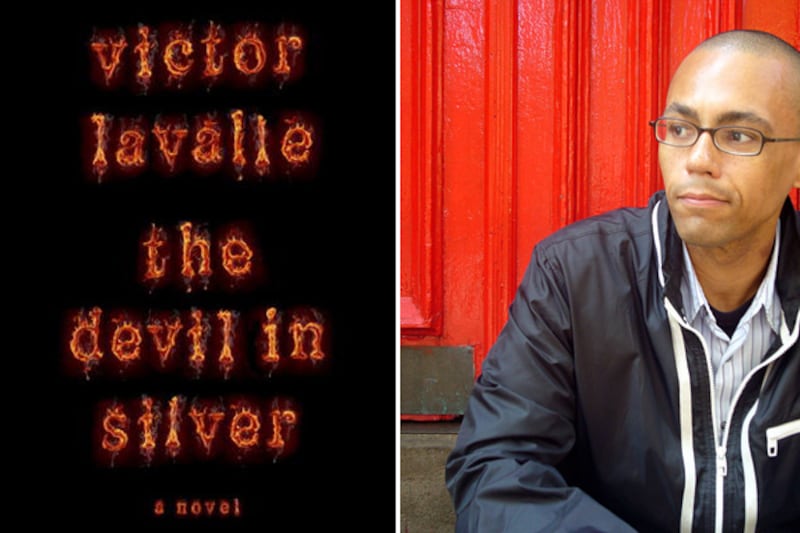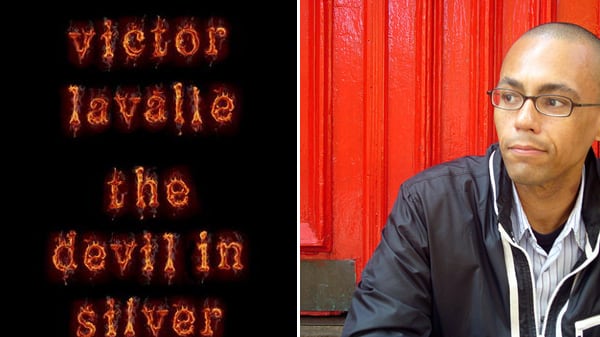In 1959, social psychologist Dr. Milton Rokeach had the bright idea to put together in the same room three paranoid schizophrenics who each thought they were Jesus Christ. For two years they had a regular meeting in which these troubled souls tried to work out for themselves what it meant to have three incarnations of God’s son exist and interact simultaneously. It makes for some astounding dialogue, and is captured wonderfully in Rokeach’s resulting book, The Three Christs of Ypsilanti.
Novelist Victor LaValle has stated that his three obsessions are religion, mental illness and horror. God doesn’t reside in New Hyde mental hospital, the setting of his new novel, The Devil in Silver, but his evil, horned counterpart is present and accounted for, showing that, as Rokeach demonstrated, LaValle’s three interests easily blend together just as well as you might imagine.
Pepper is a large, salty Queens native who occasionally gets into bar scraps. As the book begins, he’s being led into the psychiatric unit by some plain-clothes police with whom he accidentally tussled. They’re booking him for a three-day observation period, ostensibly to monitor his mental condition. He’s there instead of jail due to some kind of bureaucratic loophole that makes the officer’s lives less complicated.
Pepper gets more than he bargained for, and what is initially a three-day holiday in an asylum turns into an over-medicated, months-long adventure in New York psychiatric “care.” Pepper’s new companions are a mentally, ethnically and age-diverse cast of characters. His roommate, Coffee, keeps a binder of phone numbers (real or imagined, who can say) in the delusional hope that he can one day get through to the “Big Boss”—you know, President Obama—so he can do something about the conditions at New Hyde. Loochie is a young girl with the strength of 10 men. Dorry is a sweet old lady with a terrible secret.
The patients are tormented by inner demons, but also real ones. Pepper learns from his new neighbors that a devil stalks the halls of New Hyde. He considers it the usual crazy talk until one night when his sternum is nearly crushed by a snarling, otherworldly apparition. Pepper is fairly certain that he’s not crazy enough (yet) to have imagined it, but still has no rational explanation handy. He must decide whether to continue with his plan to escape, or to stay and make sure the devil gets his due.

“An old man’s frail body, but its head was massive, covered in matted fur that hung down to those small shoulders,” he writes, describing New Hyde’s devil. “In the moonlight its fur looked as gray as shale. It had a bison’s head. Pepper saw this and couldn’t deny it. But its body, from the shoulders down, remained gangly and feeble. Hairless. Human.” The book is set entirely within the confines of the hospital, and that environment fosters a claustrophobic, hallucinatory atmosphere. In a place where the majority of residents are medicated to the point where they can barely remember their own names, there is plenty of opportunity for reality-questioning plot twists and paranoid insanity.
Perhaps despite himself, LaValle exhibits a light touch and subtle humor that prevents The Devil in Silver from being truly terrifying. The novel is more a madcap black comedy, with Pepper going from a normal guy you might have a beer with to institutionalized pariah in less time than it takes to say One Flew Over the Cuckoo’s Nest. The truly frightening part of LaValle’s book isn’t the presence of the devil—it’s seeing how arbitrary the line between mentally fit and being locked away and drugged into a continuous stupor is. Judging by the state of the world outside New Hyde hospital, it might be time to reassess just who belongs where.






